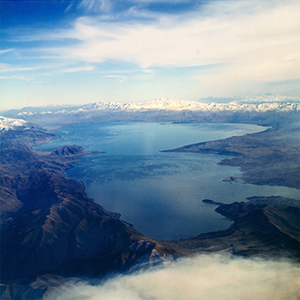Contemporary community composition, spatial distribution patterns, and biodiversity characteristics of zooplankton in large alpine Lake Sevan, Armenia

Accepted: 5 November 2023
Supplementary: 9
HTML: 1
All claims expressed in this article are solely those of the authors and do not necessarily represent those of their affiliated organizations, or those of the publisher, the editors and the reviewers. Any product that may be evaluated in this article or claim that may be made by its manufacturer is not guaranteed or endorsed by the publisher.
Authors
We studied the quantitative composition, spatial distribution, and temporal dynamics of the zooplankton community of the alpine Lake Sevan, Armenia, the largest surface water in the Caucasus region. This article is providing a long-term information and fills the research gap of multiyear data on zooplankton, as the previous research on zooplankton provided only snapshots of the community, and a consistent assessment over multiple years was missing. However, an initial mini-review of historical studies indicated that zooplankton biomass and fish abundance were undergoing large fluctuations, indicating the importance of top-down control. We analysed 239 samples from the period 2016-2019 from 32 sampling sites in Lake Sevan and recorded 37 species of meso- and macrozooplankton (Rotifers, Copepods, Cladocera). Biomass fluctuations were high with peaking biomasses in 2016 and lowest biomasses in 2018, yearly averaged biomass varied about one order of magnitude. Variability over time was hence much higher than spatial variability. The pelagic habitat at the deepest part of the lake showed the highest diversity and biomasses but contrasts between sampling sites remained smaller than changes from year to year or seasonally. Many samples were dominated by a single species, and these key species explain observed biomass dynamics to a wide extent. We applied hierarchical clustering in order to identify phenological groups that appear to show similar patterns of occurrence. This clustering resulted in 6 groups where of 5 groups just consisting of one single species and these 5 key species were the Cladocerans Daphnia magna, Daphnia hyalina, Diaphanosoma sp. as well as the calanoids Arctodiaptomus bacillifer and Acanthodiaptomus denticornis. The most important species in Lake Sevan’s zooplankton during the observation period was D. magna, which reached high biomasses in 2016 and 2017 but then suddenly almost disappeared in 2018 and 2019. When there were more D. magna present, the water became clearer, which was measured using Secchi depth. This shows that these large water fleas effectively controlled the amount of phytoplankton in the water. Daphnia magna, in turn, managed to dominate zooplankton community only during times of extremely low fish biomass indicating strong top-down control of this large Cladoceran by fish. Both observations together imply a strong trophic linkage between fish, zooplankton, and phytoplankton and provide evidence for trophic cascades in Lake Sevan. Besides the novel insights into zooplankton community dynamics of this unique lake of high socio-economical, cultural, and ecological importance, our study also points to potential management opportunities for eutrophication control by biomanipulation, as well as our investigation allows us to conclude that probably biotic factors were more important than abiotic factors in explaining the observed changes and dynamics within the plankton community.
Edited by
Bardukh Gabrielyan, Scientific Center of Zoology and Hydroecology of the National Academy of Sciences of Armenia, Yerevan, ArmeniaSupporting Agencies
Foundation for Restoration of Sevan Trout Stocks and Development for Aquaculture (Yerevan, Armenia), Science Committee of MESCS RA, German Federal Ministry of Research and EducationHow to Cite

This work is licensed under a Creative Commons Attribution-NonCommercial 4.0 International License.
-
Gayane Shahnazaryan, Martin Schultze, Karsten Rinke, Bardukh GabrielyanJournal of Limnology : 2023

 https://doi.org/10.4081/jlimnol.2022.2150
https://doi.org/10.4081/jlimnol.2022.2150





